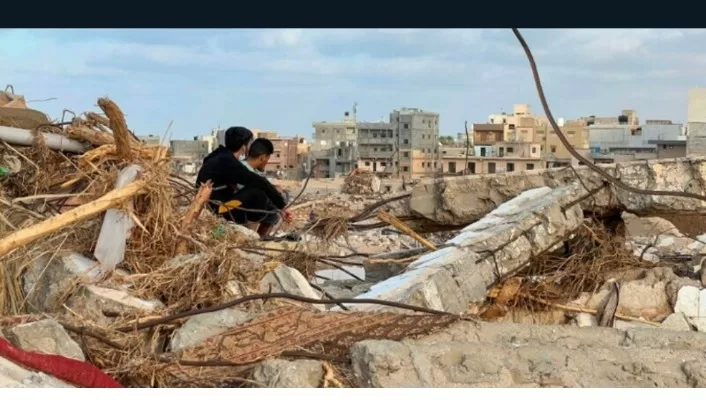In a tragic turn of events, the city of Derna in Libya has been ravaged by a flood disaster of unprecedented proportions, resulting in the loss of thousands of lives and the displacement of over 43,000 people, as reported by the International Organisation for Migration on Thursday.
The calamity unfolded as a tsunami-sized flash flood breached two antiquated river dams upstream from Derna. This catastrophic event followed the relentless assault of Mediterranean Storm Daniel on September 10, leaving in its wake a trail of devastation that included the obliteration of entire neighborhoods and the horrifying prospect of countless individuals being swept into the unforgiving sea.
Official figures currently place the death toll at more than 3,300 lives tragically lost. However, it is widely anticipated that the final count will be considerably higher, with international humanitarian organizations speculating that the number of missing individuals could surpass a staggering 10,000.
The International Organisation for Migration (IOM) has sounded the alarm, stating that approximately 43,059 individuals have been forced from their homes by the relentless floods in northeastern Libya. This dire situation has been compounded by a critical shortage of essential resources, including food, clean drinking water, and the crucial need for mental health and psychosocial support.
Moreover, amid this humanitarian crisis, the residents of Derna endured a two-day disruption in mobile and internet services. This disruption stemmed from protests on Monday, where enraged citizens pointed fingers at the authorities for the distressing loss of life.
While authorities initially attributed the communication outage to a “rupture in the optical fiber” link to Derna, some internet users and analysts have raised suspicions of a deliberate blackout.
Prime Minister Abdulhamid Dbeibah, based in Tripoli, announced on Thursday that communication services had been successfully restored in the eastern region.
This devastating flood has further exposed the deep divisions in war-torn Libya, with Dbeibah’s UN-backed interim government in the west and another government in the disaster-stricken east, led by military strongman Khalifa Haftar.
As investigations into the calamity unfold, Libya’s top prosecutor disclosed that the dams that succumbed to the torrential rains of September 10 had displayed structural weaknesses dating as far back as the 1990s. This revelation has only fueled accusations of negligence on the part of the authorities.
The deteriorating state of Libya’s infrastructure since the tumultuous NATO-backed uprising in 2011, which led to the downfall and demise of dictator Moamer Kadhafi, has become painfully evident in the wake of this disaster.
Derna, once a stronghold of radical Islamists, fell under Haftar’s control in 2018 and has retained its reputation as a hub for protest activities since Kadhafi’s era. Demonstrators, expressing their grievances outside Derna’s grand mosque, directed their ire towards the eastern Libyan parliament and its leader, Aguilah Saleh.
In a televised interview, Libya’s prosecutor general, Al-Seddik al-Sour, pledged to deliver “rapid results” in the investigation into the root causes of this heart-wrenching tragedy. He also hinted at the identification of individuals suspected of corruption or negligence, although their identities were not disclosed.
As if the survivors of Derna have not endured enough, the United Nations has issued a dire warning of a potential “second devastating crisis” in the form of disease outbreaks in the flood-affected regions. Local authorities, aid agencies, and the World Health Organization share concerns over the risk of disease transmission, especially through contaminated water sources and the lack of adequate sanitation. Libya’s disease control center has also raised the alarm about polluted mains water in the disaster zone, urging residents to refrain from using it for their own safety.







